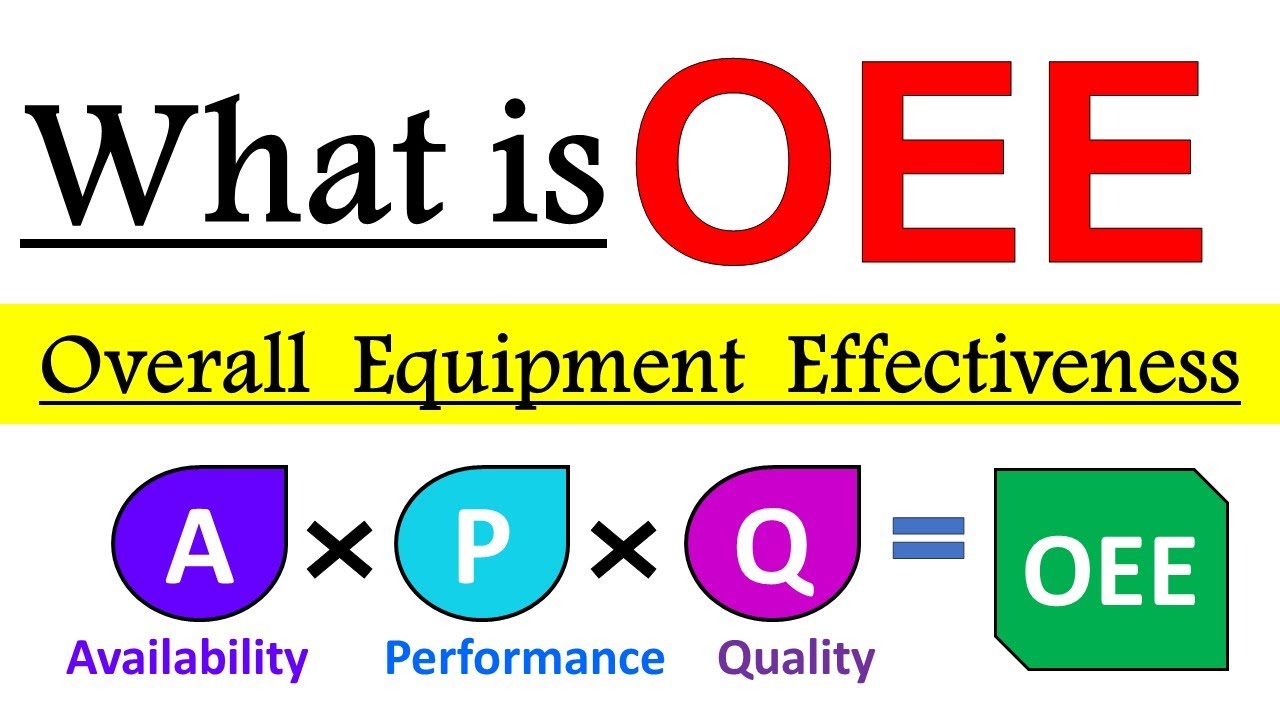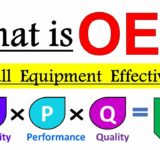Productivity is a big deal in manufacturing. It’s no secret that one of the biggest drivers of productivity is efficiency, and there are many ways to measure it. But one metric stands out as being particularly effective: OEE (Overall Equipment Effectiveness). This simple ratio not only tracks the performance of production equipment, but also gives you insight into the effectiveness of your entire factory.
What is OEE?
OEE is a measurement of productivity. It’s calculated by dividing the number of good parts produced by the total time it took to produce them. A high OEE means you’re making more, faster and with fewer defects–and that’s what makes it so powerful!
The traditional metrics used to measure manufacturing performance include efficiency (how much energy is used per unit), throughput (how many units are processed) and yield (the percentage of good products design produced). These can be useful for assessing how well operations are running, but they don’t give an accurate picture of what’s happening on the shop floor or help identify areas where improvements could be made.
How to calculate OEE
OEE is a simple calculation that takes the value of your raw materials, labor, energy costs and quality costs and divides them by your actual production time. This will give you an overall percentage of how well you’re doing in terms of maximizing efficiency while reducing waste.
It sounds simple enough–but there are some key steps to remember when calculating OEE:
- Calculate OEE over time periods that make sense for your business goals (e.g., monthly or annually)
- Make sure all inputs are accurate before starting the process
- Include downtime as an input into this calculation; otherwise it won’t reflect reality
Calculate OEE for all production processes, not just one. Calculate OEE for each individual process and then add them together to get the total OEE for your facility
OEE is a more effective metric for measuring performance
When it comes to measuring performance, it’s important to understand that there are two different kinds of metrics: output and input. Output metrics measure the results of your efforts (e.g., revenue), while input metrics measure how much time and effort you put into those results (e.g., hours worked). OEE falls into this latter category–it measures the efficiency with which resources are used during production processes. This makes it an ideal way for companies to track their success over time because it takes both sides into account without favoring either one.
The benefits of using OEE
OEE is a more effective metric for measuring performance, because it captures all the information that you need to understand how well your manufacturing processes are performing.
OEE can help you make better decisions about improving your processes, because it gives you a comprehensive view of how each part of your system is working (or not).
OEE provides a more accurate picture of performance than traditional metrics like throughput or throughput per labor hour, because it accounts for both internal and external factors that could impact any given operation’s effectiveness. For example: if an employee is sick or needs help from another colleague during their shift–or if there’s downtime due to maintenance work–this will negatively affect their OEE score but wouldn’t be reflected in other metrics such as throughput or TPH alone.
Three ways to get started with OEE
Before you can begin to improve your OEE, you need to know what it is. This will help you get started on the right foot and ensure that you’re measuring what matters most.
- Start with a baseline: It’s important to understand where your OEE stands today so that you can see how far it has come in the future. The first step in doing this is by collecting data on each individual machine or process in your manufacturing facility–this includes their uptime (how long they’ve been running), downtime (how long they have been down), defects per unit produced, etc.
- Identify the root causes of problems: Once this baseline has been established, we recommend digging deeper into each problem area by identifying its root cause(s). For example: If one of our machines is producing defects at an alarming rate despite having high uptime percentages overall (i.e., 99% over 30 days), then perhaps there’s something wrong with our tooling? Or maybe there are inconsistencies between teams working on different parts of this same product line?
Use OEE software
OEE software is a great way to track your OEE. It’s also useful for other things, like finding ways to improve it! If you’re looking for an easy way of measuring the performance of your manufacturing processes, then OEE data collection software might be the solution for you.
OEE software can be used in any industry and has been shown to provide a number of benefits:
- Improved productivity – By analyzing data from past weeks or months, managers can identify areas where improvements need to be made in order for their company’s overall efficiency and profitability levels (and therefore morale) not only remain high but continue improving over time as well.
- Increased visibility – OEE software can help managers identify areas where improvements need to be made in order for their company’s overall efficiency and profitability levels (and therefore morale) not only remain high but continue improving over time as well.
By using this simple metric, you can greatly increase your business’s productivity and performance
OEE is a more effective metric for measuring performance because it measures the efficiency of the entire manufacturing process by combining all three elements of production into one number: output, availability and quality.
It’s also easy to understand because it uses familiar terms like “availability” (how often does something work) and “quality” (how well does something work). You might think about how often your car breaks down when you drive it vs its gas mileage; both are important factors, but they aren’t necessarily related or even compatible with each other.
Conclusion
In the end, OEE is a valuable tool for any business. It allows you to make informed decisions about where improvements need to be made and how best to achieve those improvements. Having a good understanding of your OEE will help ensure that each step in your manufacturing process is as efficient as possible–which means better products and happier customers!







